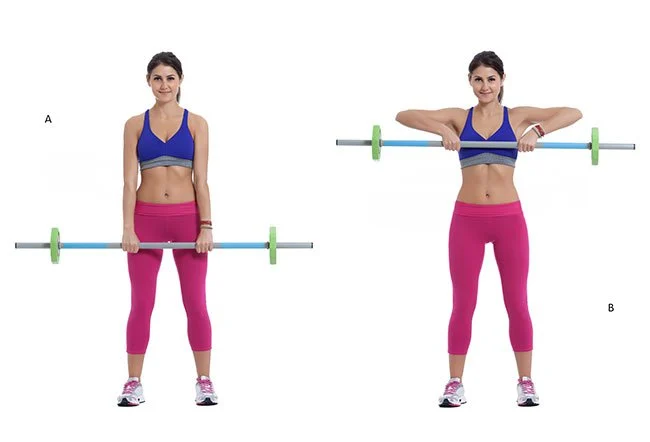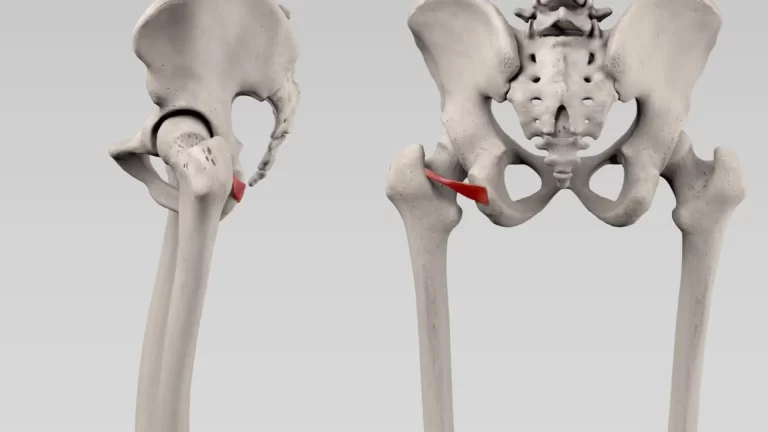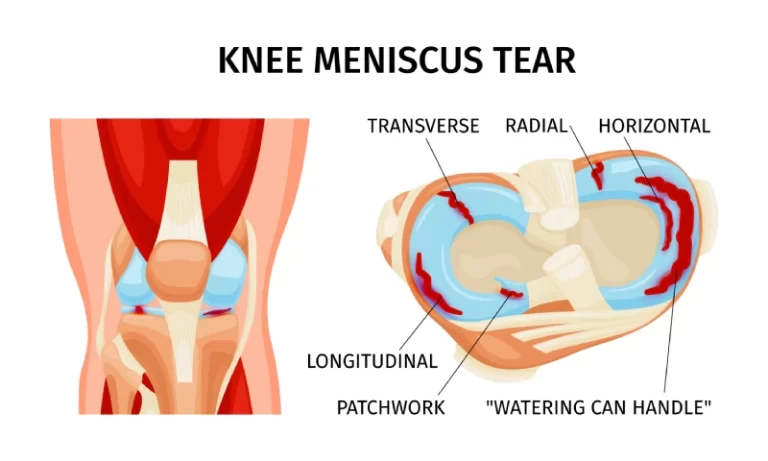Upright row exercise: Health Benefits, Muscle worked, How to Do?
What is upright row exercise?
The upright row is a weight training exercise done by holding a weight with an overhand grip and lifting it straight up to the collarbone. The upright row is a compound exercise that utilizes your trapezius, the biceps, and the deltoids.The upright row is considered one of the best muscle builders for the shoulders and back. It is also potentially dangerous for the shoulders, this exercise requires a perfect form for the best results and to avoid injury. The upright row is generally performed by bodybuilders and is also used in some boot camps and high-intensity interval training (HIIT) classes.
Which muscles are used to perform the upright row exercise?
This exercise mainly targets the trapezius, which spans the upper to mid-back, and the deltoids, which wrap around your shoulder joint.
Health Benefits by doing Upright Row exercise.
- This exercise works the anterior and middle heads of the deltoids (shoulder muscles). The upright row also helps to build strength in the trapezius and rhomboids (muscles in the middle and upper back), and even the biceps muscles (front of the upper arm).
- All of these muscles help us to make lifting and pulling activities easier. This includes lifting grocery bags off the ground to place them on the counter, pulling your pants on while getting dressed, and other similar activities.
- The upright row is mostly used by bodybuilders who are targeting specific muscles. However, research indicates that this exercise can also be part of an effective strength training routine for others, such as a workout created for career firefighters.
- This exercise will help to build your arm muscle mass.
- This exercise helps to improve overall shoulder muscles strength.
How to Do an Upright Row in proper form?

- For this exercise, you have to Stand with shoulder-feet width apart. hold the barbell and allow it to hang in front of you at the length of your arms. keep Your palms to face your body and your hands in line with the thighs.
- Inhale and brace the abdominals, your back should be straight, chest up, eyes focused forward.
- Raise the barbell straight up by breath out.
- Lead with elbows and keep the barbell close to your body. Your arms should not move higher than the shoulder height.
- Hold at that point for a couple of seconds then slowly lower the barbell by breath in. Return to the initial position.
- Repeat for the 15 to 20 repetitions for 2 to 3 sets.
There have different Variations of an Upright Row exercise.
The upright row can be adjusted to make it more accessible to the beginner and to increase the effort needed as you get stronger.
Dumbbell Upright Row
How to do it?
- If you do not have a barbell, you can perform the upright row with a set of dumbbells.
- When doing this variation, keep your hands in the same general position as you perform with a barbell upright row.
- Palms should be facing in and hands in line with the thighs.
- For this exercise, you have to Stand with shoulder-feet width apart. hold the Dumbbell in both hands and allow it to hang in front of you at the length of your arms.
- Keep Your palms to face your body and your hands in line with the thighs.
- Inhale and brace the abdominals, your back should be straight, chest up, eyes focused forward.
- Raise the Dumbbell straight up by breath out.
- Lead with elbows and keep the Dumbbell close to your body.
- Your arms should not move higher than the shoulder height.
- Hold at that point for a couple of seconds then slowly lower the Dumbbell by breath in.
- Return to the initial position.
- Repeat for the 10 to 15 repetitions for 2 to 3 sets.
Kettlebell Upright Row
How to do it?
- You can also perform this exercise with a kettlebell.
- For this exercise, you have to Stand with shoulder-feet width apart. hold the Kettlebell in your hands and allow it to hang in front of you at the length of your arms. keep Your palms to face your body and your hands in line with the thighs.
- Inhale and brace the abdominals muscles, your back should be straight, chest up, eyes focused forward.
- Raise the Kettlebell straight up by breathing out. lead with elbows and keep the Kettlebell close to your body. your arms should not move higher than the shoulder height.
- Hold at that point for a couple of seconds then slowly lower the Kettlebell by breath in. Return to the initial position.
- Repeat for the 10 to 20 repetitions for 2 to 3 sets.
Cable Upright Row
How to do it?
- Another upright row variation is done with a cable machine. The cable upright row allows you to perform a smooth movement and you can easily adjust the weight to match your strength level. the upright row starts by holding the bar at thigh level and pulling it up toward the chest level.
- Position a cable at the lowest position possible and attach a straight bar.
- Reach down and hold the handle with a pronated grip and stand up with the arms extended.
- Take a deep breath then pull the handle high directly upward in front of your body by driving your elbows high.
- Slowly lower the handle back to the initial position under control.
- Repeat for the 10 to 25 repetitions for 2 sets.
Plank Upright Row
How to do it?
- You can make the upright row even more challenging by adding a plank to the end of the movement.
- After doing the upright row and returning the weight to the initial position, lower your body into a plank, hold for 2 to 3 seconds, then stand back up again perform upright row.
- Repeat for the 15 to 20 repetitions for 2 to 3 sets.
This Common Mistake happens while performing upright row exercises, you should avoid these mistakes to get more benefits and avoid strain or injury.
Arm Position
- While lifting any weight, your elbows should be above the level of your forearms. Do not raise the arms above parallel to avoid impingement symptoms, which is a condition that decreases your shoulder range of movement.
Grip Position
- The upright row can strain your wrists, so use only a wide grip. Shoulder-width apart is recommended for shoulder and wrist safety. performing this exercise with a wide grip can also increase the activation of the trapezius and deltoid muscles.
- Your wrists should be supple during the lift, allowing them to flex as needed. Try to keep them from moving down or to the side during the lifting as well.
Back and Torso
- Keep your trunk stationary and the abdominals braced throughout the exercise—no turning or twisting. your back should be straight with the chest up and your eyes focused ahead. There should not be any movement in the legs (unless you are adding a plank, for instance).
Excessive Weight
- Don’t lift heavy weight with this exercise unless you are experienced and trust your shoulder joints. The shoulder joint is a very complex mechanism and injuries to it can severely impact your exercise goals it can take more time to heal. Shoulder impingement can occur mostly with excessive weight.
- If you are new to this exercise, start doing it with a barbell with no weight. This will give you a chance to experience the lift, learning the form and the positioning throughout. Add some weight gradually, watching that you do not add too much weight before your shoulders are ready.
Safety and Precautions
- If you like to do upright rows, then be sure you can do this with perfect posture and perfect form. Better yet, choose another exercise that utilizes these same muscles but is less dangerous to your shoulder. This includes the push-ups, overhead press, and bench press.
- When your workout includes shoulder muscles then take care to avoid injuries. upright row exercise is not done by people with back pain.
- You should start with a lighter weight then go for a heavyweight.
- If any pain or inflammation is noticed in the shoulder area then yous should avoid this exercise.
- When exercise is done with a barbell, you can use a “wavy” EZ curl bar to make this exercise a little easier on your wrist joints. Look for an EZ curl bar that allows you to grip the barbell at slight angles to help decrease the strain on the wrist joint from the angle at the top of the lift.
When did you not do this exercise?
- If you feel pain or any inflammation in your shoulder joint then you should avoid this exercise.
- If you are suffering from back pain.
- If your doctor advised you to take a rest.
- If your arm bone is recently fractured.







One Comment